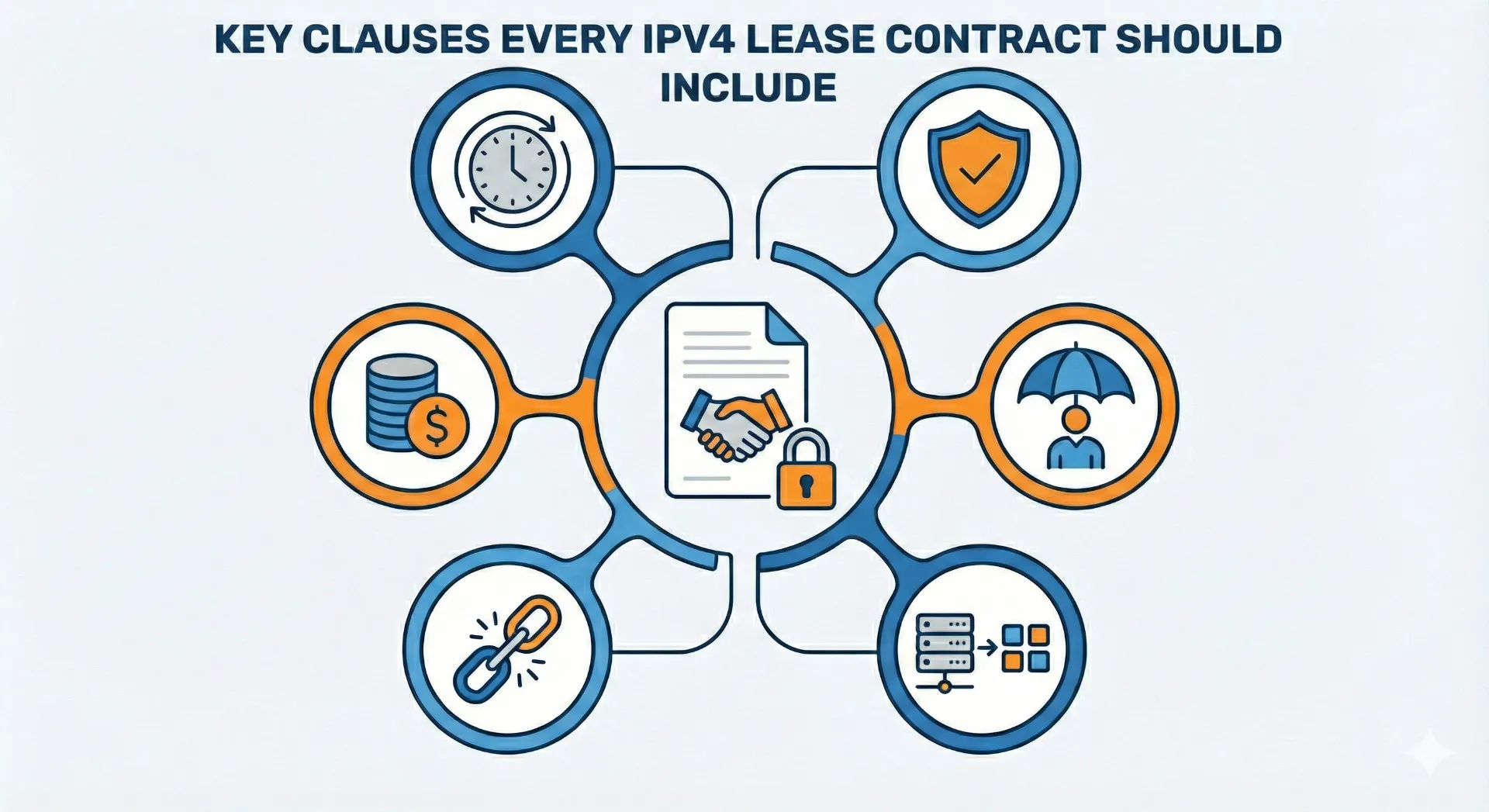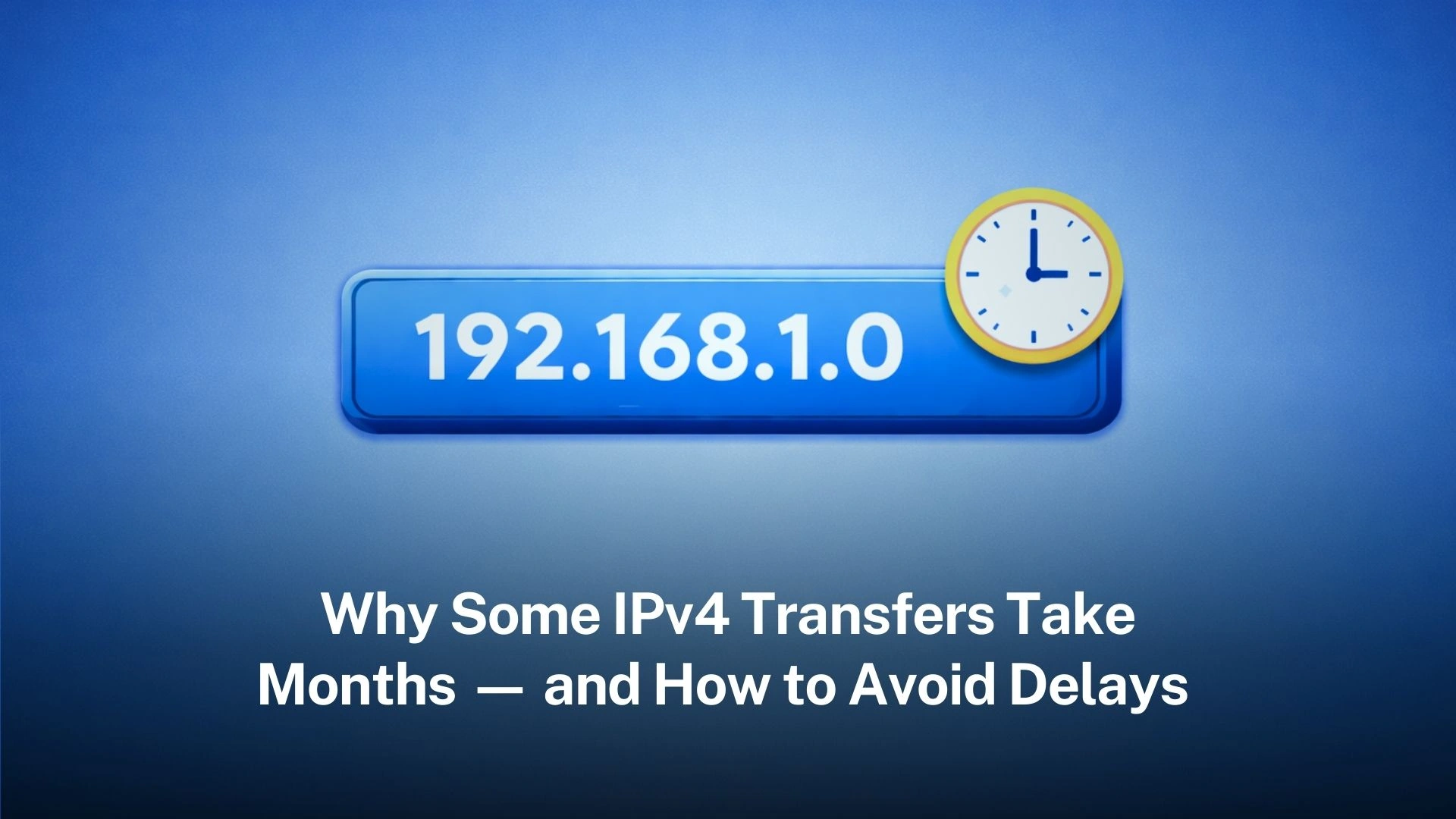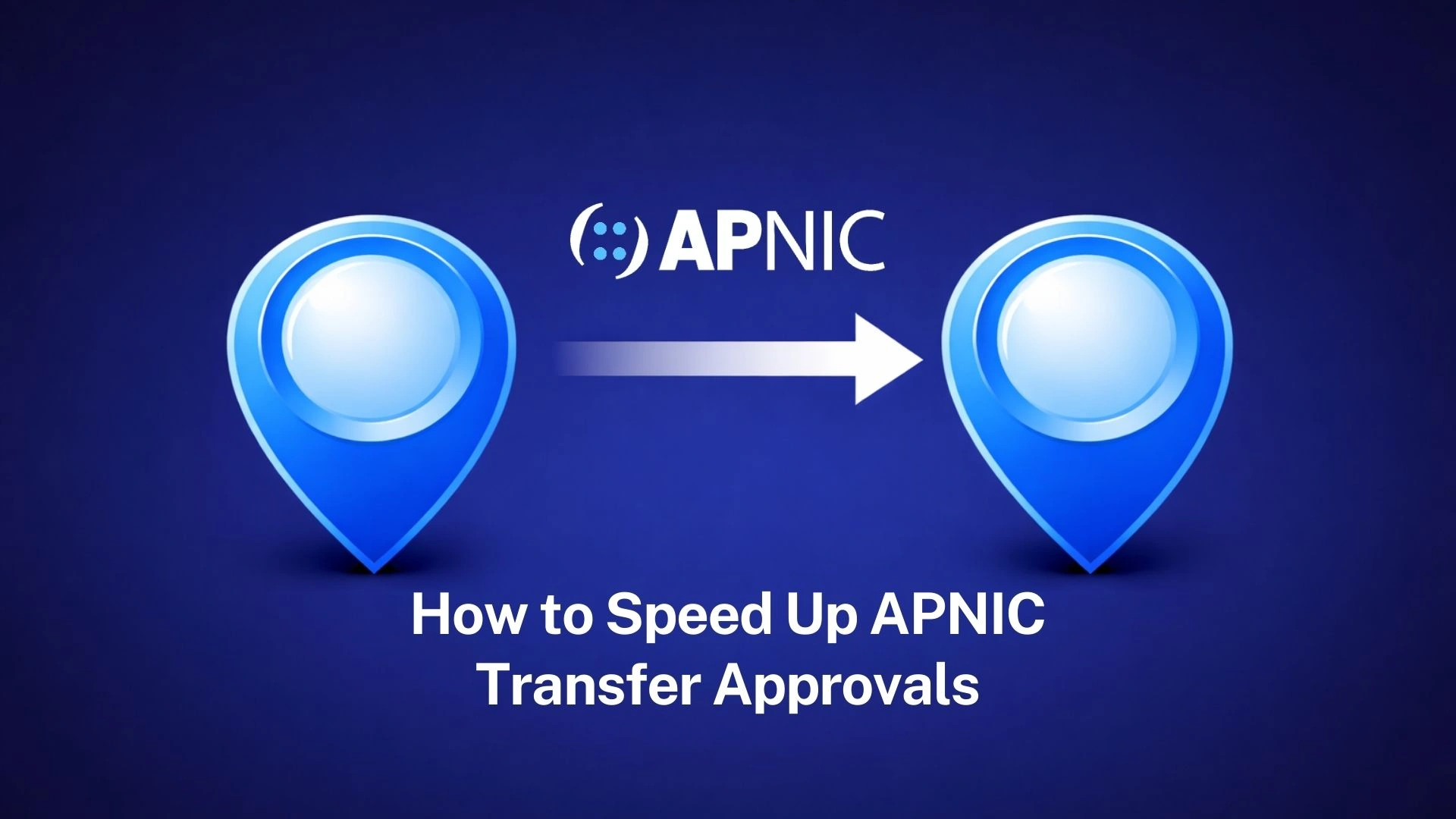What is IP Address Allocation?

IP address allocation is giving unique numbers to devices on a network. IANA gives large blocks of IP addresses to regional groups. These groups give them to smaller providers or companies.
Table of Contents
Toggle
The goal is to make sure IP addresses are used fairly. This system has been in place for many years. It helps prevent waste and keeps the internet organized.Once the request is approved, the company receives a block of addresses. These addresses are then assigned to devices within the company’s network, ensuring proper use and allocation.
RIRs handle requests from ISPs and large organizations requiring IP addresses. Applicants must demonstrate legitimate need through documented requirements. RIRs evaluate these requests based on established policies to ensure fair distribution.
How IP Address Allocation Works
IP addresses are divided into two main types: IPv4 and IPv6.They are running out because there are too many devices. IPv6 addresses are longer and solve this problem. They provide enough addresses for future growth. The allocation process is similar for both types but focuses on different ranges.
When a company needs IP addresses, it requests them from an RIR or ISP. The request must show why the addresses are needed. The provider checks if the request is valid. If approved, the company gets a block of addresses.
The Role of IANA and RIRs
IANA is the top-level organization for IP address allocation. It manages the global pool of addresses. IANA does not give addresses directly to end users. Instead, it works with RIRs. There are five RIRs around the world. Each one covers a specific region. RIRs take addresses from IANA and distribute them further. They give blocks to ISPs and large organizations. These groups then assign addresses to smaller networks or customers.
Challenges in Modern IP Allocation
The exhaustion of IPv4 addresses remains a significant challenge for many networks. Organizations face rising costs when leasing IPv4 addresses from third parties. This creates barriers for smaller entities needing address resources. Address fraud presents another challenge in allocation systems. Some entities attempt to obtain addresses under false pretenses.
One big challenge is the shortage of IPv4 addresses. There are not enough for all devices. This has led to workarounds like NAT, which lets multiple devices share one IP. But NAT is not a perfect solution.
Another issue is fair distribution. Some regions have more addresses than others but disputes can still happen. Organizations must prove they need addresses before getting them. This helps prevent hoarding and waste.
The Future of IP Address Allocation
The future will rely more on IPv6. It offers enough addresses for all devices. But the transition takes time. Many networks still use IPv4. Dual-stack systems allow both types to work together. This helps during the switch. Over time, IPv6 will become the standard.
Automation will also play a bigger role. Tools can now manage IP allocation with less human input. As networks grow, efficient allocation becomes even more important. The goal is to keep the internet running smoothly for everyone.
Mistakes Many networks suffer from poor documentation of address assignments. This leads to conflicts when duplicate IPs appear on the network. Some administrators assign addresses randomly without proper planning. These practices create ongoing management challenges as networks expand. Another common mistake involves delaying IPv6 adoption.
Organizations clinging to IPv4 systems face increasing limitations. Early planning for IPv6 transition prevents rushed migrations later. Training staff on modern addressing practices helps avoid these pitfalls.
IP Allocation for Home Users
Home users usually get IP addresses from their ISP. The ISP assigns a public IP to the router. The router then gives private IPs to devices at home. This is done automatically using DHCP. Most home users do not need to worry about allocation. The system handles it for them.
Some users might want a static IP for gaming or hosting servers. This requires asking the ISP for a special setup. Static IPs can cost extra. For most people, dynamic allocation is enough. It works well for browsing and streaming. The ISP manages the addresses, so users do not have to.
Best Practices for IP Allocation
Next, choose between static and dynamic allocation. Use static for critical devices and dynamic for others. Regular reviews are important. Remove unused addresses to free them up. Update systems to support IPv6 if possible. Train staff on proper allocation methods.
“The Internet works because a lot of people cooperate to do things together.”
— Jon Postel, Founder of Internet Assigned Numbers Authority (IANA)
Tools for IP Address Management
Many tools can help with IP allocation. They automate the process and reduce errors. Some tools track usage and generate reports. Small networks might use simple software. Large enterprises need advanced systems. The right tools make IP management easier and more reliable.
Case Studies of IP Allocation
ISPs also face unique challenges. They must allocate addresses to many customers. Dynamic allocation helps them manage limited IPv4 addresses.
IP Allocation and Network Performance
Proper allocation improves network performance. It reduces conflicts and delays. Poor allocation can cause slowdowns or outages. For example, duplicate IPs can disrupt communication. Dynamic allocation helps balance load by distributing addresses as needed. Businesses should monitor performance metrics. This helps identify allocation issues. Fixing these issues keeps the network fast and reliable. Good allocation practices lead to better user experiences.
The Role of DHCP in IP Allocation
DHCP is a key tool for dynamic allocation. It automatically assigns addresses to devices. DHCP servers can be set up to reserve addresses for specific devices. This combines the benefits of static and dynamic allocation. DHCP reduces manual work and errors. It is a simple but powerful part of IP management.
“The exhaustion of the free IPv4 pool was inevitable... Luckily, we prepared for this eventuality with IPv6, which contains enough address space to sustain the Internet for generations”
— John Curran, President and CEO of American Registry for Internet Numbers (ARIN)
IP Allocation in Wireless Networks
Wireless networks face unique allocation challenges. Devices connect and disconnect often. Dynamic allocation is common here. DHCP handles the changing demands. Some networks use guest IP ranges to separate traffic.
Security is also a concern. Unauthorized devices might try to join. Proper allocation and monitoring prevent this. Wireless networks must balance convenience and safety. Good practices keep them running well.
IP Allocation for IoT Devices
The Internet of Things adds many devices to networks. Each one needs an IP address. Dynamic allocation is often used because of the large number.
Managing IoT IPs can be complex. Devices may come and go frequently. Automated tools help handle this. Proper allocation ensures that IoT networks remain scalable and efficient.
IP Allocation and Cloud Computing

Cloud services rely heavily on IP allocation. Virtual machines and containers need addresses. Cloud providers use dynamic allocation to meet demand. They also offer tools for customers to manage their own IPs.
Scalability is a key benefit. Customers can get more addresses as needed. The cloud model makes IP allocation flexible and cost-effective. This supports modern business needs.
IP Allocation in Large-Scale Networks
Big networks like universities or governments need careful allocation. They may have thousands of devices.
Centralized tools help track all addresses. Regular audits ensure nothing is wasted. Large networks must plan carefully to avoid problems.
IPv6 adoption is growing but slow. Many networks still use IPv4. Dual-stack systems help during the transition. They allow both types to coexist. Over time, IPv6 will replace IPv4.
The benefits of IPv6 are clear. More addresses and better features make it the future.
Final Thoughts on IP Address Allocation
IP allocation is a vital part of networking. It ensures devices can communicate. The process involves many steps and tools. Good allocation practices help everyone enjoy a smooth internet experience.
Troubleshooting IP Allocation Issues
Address conflicts typically manifest as connectivity problems. They record address assignments, releases, and lease renewals. Timestamped entries help reconstruct events leading to problems. Methodical investigation approaches resolve issues efficiently with minimal downtime.
Cloud Computing IP Requirements Cloud platforms handle IP allocation differently than traditional networks. Virtual machines receive addresses automatically upon creation. Public cloud providers manage enormous address pools dynamically. Customers can scale their address usage based on real-time needs. Cloud IP management emphasizes flexibility and automation. Addresses are constantly assigned and released as workloads change.
Providers offer integrated tools for monitoring and controlling address usage. This model supports agile business operations in virtual environments. Large-Scale Network Allocation Techniques Major institutions like universities require sophisticated IP planning.
Address Allocation for Virtual Environments Virtualization platforms have unique IP requirements. Virtual machines need addresses just like physical devices. Hypervisors often include integrated DHCP services for virtual networks. Some environments use private address spaces for internal communication between virtual components.
Management complexity increases with large virtual deployments. Templates help standardize network configurations across virtual instances. Snapshot features should include network settings to maintain consistency. These measures ensure orderly operation in dynamic virtual environments. IP Allocation in Mergers and Acquisitions Combining networks during corporate transactions presents addressing challenges. Duplicate private address ranges may exist between organizations.
Network Address Translation can provide temporary solutions during integration. Phased migrations allow thorough testing at each stage. Documentation from both organizations aids the integration process. Clear communication ensures all teams understand the new network architecture.
Allocation for Remote Workers
Distributed workforces create new allocation requirements. VPN solutions often assign temporary addresses to remote devices. Some organizations implement split tunneling to reduce address consumption. Cloud-based management tools help oversee dispersed network resources.
Security remains paramount for remote access solutions. Multi-factor authentication complements IP-based controls. Clear usage policies should address home network configurations. These measures protect corporate resources while enabling flexible work arrangements.
Mobile Network Addressing Methods

Cellular networks employ unique IP allocation strategies. Carrier-grade NAT allows sharing addresses among many users. Some providers offer public IP options for business customers. IPv6 adoption is progressing across mobile networks to accommodate growing demand.
Mobile devices frequently change network attachment points during movement. This requires dynamic address assignment systems capable of rapid reallocation. Special considerations apply to always-connected IoT devices on cellular networks.
IP Allocation in Healthcare Networks Medical facilities have strict requirements for network availability. Patient monitoring systems need reliable addressing for continuous operation. HIPAA regulations influence address management practices to protect sensitive data. Separate networks often handle clinical systems and administrative functions. Downtime can have serious consequences in healthcare environments. Redundant addressing schemes support critical failover systems. Detailed change management procedures prevent service disruptions. These measures ensure continuous operation of life-saving technologies.
IP Allocation for Financial Services Banks and trading platforms demand high availability addressing solutions. Low-latency networks require optimized address assignments. Security controls include IP-based restrictions for sensitive systems. Transaction monitoring tracks address patterns to detect potential fraud. Financial networks often use proprietary protocols with specific addressing needs. Disaster recovery plans include detailed addressing documentation. These practices support secure, reliable financial operations in digital environments. IP Allocation in Industrial Networks Manufacturing environments employ specialized network architectures. Programmable logic controllers often require static addressing. Industrial protocols frequently assume specific address ranges in their design. These requirements influence overall network planning in production facilities.
Safety systems typically use completely separate network segments. This isolation prevents interference with production systems. Strict change management controls govern all addressing modifications. These practices ensure safe, reliable industrial operations.
Educational Network Addressing Approaches Academic institutions face unique allocation challenges. Student devices connect and disconnect frequently throughout campuses. Guest networks must accommodate visitor access without compromising security.
Research projects often require special address allocations for experimental setups. These networks typically implement separate subnets for different user groups. Staff, students, and services each receive dedicated address ranges. Wireless networks require particular attention due to high address turnover. These practices maintain service quality across educational facilities. Government Network Allocation Practices Public sector networks emphasize security and accountability in addressing. Many implement strict assignment policies with detailed audit trails.
Some agencies use proprietary addressing schemes for additional protection. These measures support compliance with stringent security requirements. Inter-agency connections require careful coordination. Shared services need compatible addressing schemes. Transition plans must account for bureaucratic processes. These practices ensure continuity of government operations during network changes.
Trusted IPv4 Leasing for Business Growth
Get enterprise-grade IPv4 space quickly, with seamless deployment and end-to-end management.
FAQs
IP address allocation is the process of assigning unique IP addresses to devices or networks. At a global level, large blocks of IP addresses are distributed to regional organisations, which then allocate smaller blocks to internet service providers (ISPs) or companies.
The Internet Assigned Numbers Authority (IANA) manages the global IP address pool. It distributes blocks of IP addresses to regional internet registries (RIRs), which cover different geographic regions. These registries then allocate addresses to ISPs or large organisations. When an organisation requests a block of addresses, it must usually demonstrate a legitimate need.
- The exhaustion of IPv4 address space, which has made allocations more limited and costly.
- Ensuring fair distribution and preventing hoarding or misuse.
- Transitioning to IPv6, which offers a much larger address space but requires gradual adoption.
- Managing allocations in large-scale environments like IoT, wireless, and cloud networks.
For most home users, the Internet Service Provider (ISP) assigns a public IP address (often dynamic) to the router. The router then uses private IP addresses internally to connect individual devices. If a static public IP is needed—for example, for hosting a server or remote access—it can usually be requested from the ISP.
- Use static IP addresses for critical systems and dynamic allocation for general devices.
- Review address usage regularly and reclaim unused addresses.
- Plan for IPv6 adoption to ensure long-term scalability.
- Implement IP address management (IPAM) tools to track usage and avoid conflicts.
- Maintain proper documentation and conduct periodic audits to prevent duplicate addressing or errors.
Related Blogs
As IPv4 scarcity deepens, carefully drafted lease contracts have become essential tools for managing risk, compliance and long-term network stability.Well-defined Read more
Key points:IPv4 transfer delays are primarily driven by registry policy complexity and incomplete or inconsistent documentation.Early preparation, pre-approval and professional Read more
Standfirst APNIC IPv4 transfers can stall on documentation, timing, and registry hygiene. Preparation, pre-approval, and clean records materially accelerate outcomes. Read more
As IPv4 scarcity deepens, carefully drafted lease contracts have become essential tools for managing risk, compliance and long-term network stability.Well-defined Read more
Key points:IPv4 transfer delays are primarily driven by registry policy complexity and incomplete or inconsistent documentation.Early preparation, pre-approval and professional Read more
Standfirst APNIC IPv4 transfers can stall on documentation, timing, and registry hygiene. Preparation, pre-approval, and clean records materially accelerate outcomes. Read more



